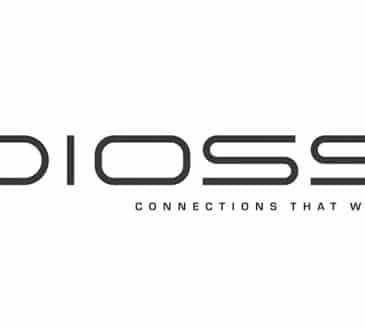The co-CEO model: Risk or reward?

Success is becoming harder in a competitive and uncertain world: Today’s business environment is a cocktail of competition and uncertainty. High performance is harder to come by, as indicated by a Forbes study of 400 top global executives, where 90% stated they do not believe the current environment is friendly to business. With increasing complexity, disruption, and transformation, has the CEO role become too large for one individual? Founder and namesake of David Martin & Company believe having multiple decision-makers in this role “almost never works.” Still, there are many cases where co-CEOs may be more viable than conventional wisdom suggests.
Enter the co-CEO model, a novel approach to leadership
A co-CEO model is an avant-garde approach to leadership where the decisions and responsibilities of a chief executive are shared between two counterparts. Only eight companies in the Fortune 500 operate with this model. According to Harvard Business Review, sharing responsibilities based on functional or technical expertise could be valuable in industries or specific circumstances where a company may experience rapid growth, change and disruption, or a high volume of transaction activity. Additionally, Chief Executive Magazine claims that co-CEO models often arise in companies with multiple founders that maintain a close working and often personal relationship.
In a tumultuous world filled with pressure, there is potential value
Due to the ever-increasing demands and pressures CEOs face, this shared leadership can allow the co-executives to serve their company more efficiently and effectively. An HBR study conducted with 87 public companies shows that organizations led by co-CEOs performed better, with an average annual shareholder return of 9.5%, compared to companies with a sole CEO, which generated an average of 6.9%. Adopting this model can be valuable not only to the overall company but also to the leaders themselves. The benefits include:
- Improved mental health: According to an article in Fortune, having someone who thoroughly understands the struggles of the role can relieve the daily stresses and pressure CEOs face. Sharing the workload with an equal counterpart who has access to the same information and holds the same authority can improve a CEO’s work-life balance.
- Leverage individual strengths and capacity play: Co-CEOs with different backgrounds can leverage each other’s strengths when dividing tasks and responsibilities. Control may be split either functionally to allow for more hands-on management or by strategic focus so that one leader may spearhead innovation. At the same time, the other runs the day-to-day operations.
- Enhanced decision-making: When each co-CEO has total ownership of specific business areas, the expertise they can develop can expedite the decision-making process. An article in WorkLife claims that checks and balances decrease the risk of poor decisions, and two leaders improve innovation as they can stress-test new ideas to ensure that all bases are covered.
- Creation of a collaborative culture: Shared leadership modelled at the top of the organization sets up a strong foundation for collaboration between employees, as they feel encouraged to share responsibilities and work with each other seeing how effective this can be at the leadership level.
- Improved succession planning: According to Financial Review, the model can make succession planning smoother by having the company’s success as a co-CEO. The successor can be better equipped to manage the organization by receiving mentorship from the current CEO and being placed in a position to make executive decisions early on.
Case studies of co-CEOs offer valuable lessons learned
Theoretically, the co-CEO model provides many benefits for the organization. However, the real test of a model’s viability is whether it can stand up once individual personalities and external factors come into play. SAP employed the co-CEO model with Bill McDermott and Jim Snabe in 2010; it was brought back again in 2019 with Christian Klein & Jennifer Morgan. Both arrangements were successful in execution. However, the company decided to revert to a single-CEO model in 2020 due to the COVID-19 pandemic. The organization stated in an article in the Wall Street Journal, “More than ever, the current environment requires companies to take swift, determined action, which is best supported by a clear leadership structure.”
Another interesting case is the luggage and travel accessory retailer Away. The founding CEO, Steph Korey, had planned to step back into the Executive Chairman role and bring in Stuart Haselden as the new CEO. However, Korey changed her mind and stayed on as co-CEO with Haselden. This arrangement did not inspire confidence, as the model appeared to not arise from a foundation of collaboration and mutual buy-in. Co-CEOs must be the plan and not the outcome.
The model has been used temporarily for a specific strategic purpose, as seen with WeWork, who appointed co-CEOs to oversee a stabilization period after a rocky period under co-founder Adam Neumann. Research in Motion (RIM), now Blackberry, employed the co-CEO model for 20 years. The two leaders, Jim Balsillie and Mike Lazaridis led the company through the most successful period in its history. Though they failed to foresee the smartphone market changes that cost the company dearly, this can hardly be blamed on the Co-CEO model itself, as many more companies with sole CEOs have made the same mistake.
Based on these examples, the Co-CEO model may be a legitimate option for certain companies, environments, and circumstances.
Success is about putting the proper infrastructure in place from the start
While for many organizations, the value added by co-CEOs can far exceed the disadvantages or perceived risks, this does not guarantee that the model will be successful. Co-CEOs’ ability to succeed goes beyond business conditions and even the candidates themselves. The proper infrastructure to support success includes:
- Alignment of the company’s mission, vision, and values – Having co-CEOs with shared core values and vision for the company’s future is the first factor the company must get right. Without this alignment, the chiefs are likely to be in conflict over the “correct” vision and direction of the company, which dramatically reduces decision effectiveness and leads to an unclear strategy and lack of focus that can permeate the organization.
- Complimentary skillsets & personalities – One of the most attractive benefits of the co-CEO model for organizations is the ability to expand the span of leadership at the CEO level and “divide and conquer.” To do this successfully, the co-CEOs must have diverse and complementary skillsets, experience, and personalities. As the overlap for these attributes increases, the risk of conflict also increases.
- Clear roles, responsibilities, and authority – Clear spans of control, responsibility and accountability are vital to ensuring a productive co-CEO dynamic. Intentional separation by function helps ensure that authority and responsibility are apparent throughout the organization and reduces conflict that can arise from overlapping focuses. Each CEO can play to their strengths, leading to better outcomes for the business.
- Established conflict resolution framework – With two leaders comes inevitable conflict, and the key is keeping it constructive. One possibility is having outside board members or a strong chairman provides perspective and assist in the resolution, such as how SAP managed its model. Otherwise, establishing a formal and mutually agreed procedure document for resolving leader deadlock ensures that decision efficiency and effectiveness can be maintained.
- Have an exit plan – It is wise to have a formal succession plan for co-CEOs established early on to ensure that the arrangement can be dissolved with a minimal negative impact on the organization and its employees.
- Know yourself and check your ego at the door – Self-awareness and the willingness to put aside personal feelings and ego may sound self-evident. Still, it is critical for a successful co-CEO dynamic. The two leaders must be aware of counter-productive behaviours and prioritize the company’s needs over personal slights.
- Foundation of trust – “Ultimately, it’s about trust — a successful team is rooted in that. The best partnerships, of any kind, are built on respect and a willingness to be flexible,” states Summer Friday co-CEO Lauren Gores. Co-CEOs must be transparent about issues, challenges, and perspectives. Trust must be established to make decisions that align with the company’s goals. “If one of us feels strongly about something in an area we know well, we don’t waste time going back and forth. We simply make the decision and move forward”.
- Inward and outward communication – Leaders who share authority must be willing to engage in collaborative behaviours and communicate openly, honestly, and respectfully. Equally important is establishing a clear message to employees and the public, presenting a united front, and maintaining decision clarity.
The right model for any organization is ultimately situational dependent
In certain situations, industries and organizations, the co-CEO model can have far more benefits than drawbacks. If your industry is particularly susceptible to transformation, is fast-paced and growth-focused or requires more substantial technical knowledge at the top leadership level, then a Co-CEO model presents many advantages. After all, having only one CEO does not guarantee success for a company, and the ever-evolving business challenges we experience today require more creative solutions to safeguard a company’s success.
Co-Authored by Lance Mortlock (EY Canada Managing Partner, Energy & Author of Disaster Proof) & Karun Gautam (EY Canada, Senior Manager, Energy).
Have you read?
The Art of LETTING GO to achieve greater heights and goals by Aden Eyob.
MY FAVORITE HOLIDAY IS ELECTION DAY by Dr. Jim White.
Overcoming our memory limits with the cognitive offloading: dream or reality by Riccardo Pandini.
How You Can Successfully Start a Business or Help a Failing Business Survive by Dr. Maky Zanganeh.
Add CEOWORLD magazine to your Google News feed.
Follow CEOWORLD magazine headlines on: Google News, LinkedIn, Twitter, and Facebook.
Copyright 2024 The CEOWORLD magazine. All rights reserved. This material (and any extract from it) must not be copied, redistributed or placed on any website, without CEOWORLD magazine' prior written consent. For media queries, please contact: info@ceoworld.biz








